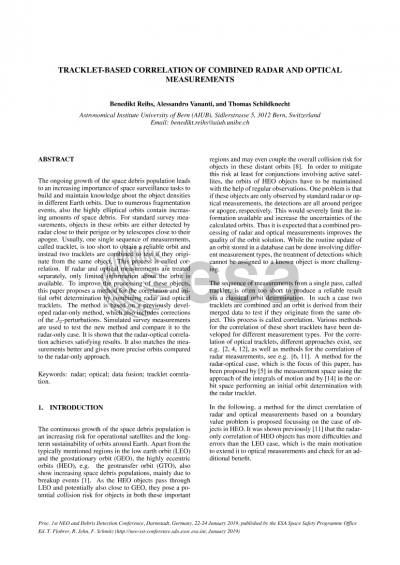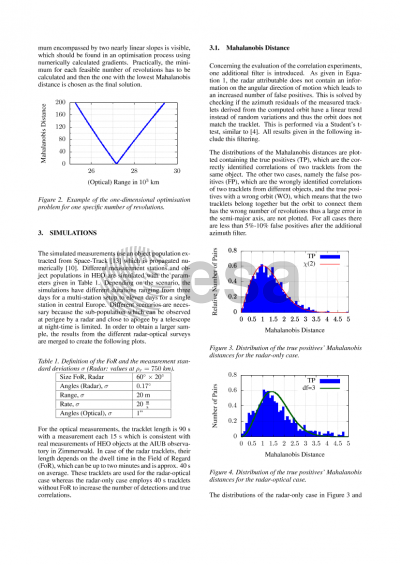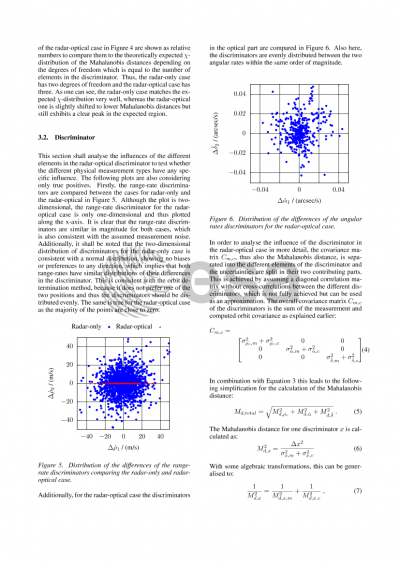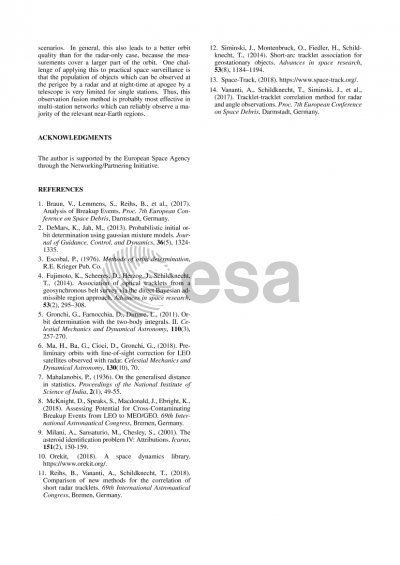Document details

Abstract
Space surveillance systems employ different types of sensors to survey specific regions in space. While radar systems are predominantly used to track objects in low Earth orbit (LEO), telescopes are mainly used for objects in higher altitudes, e.g. the geostationary orbit (GEO). Objects in certain highly elliptical orbits (HEO), e.g. geosynchronous transfer orbits (GTO) or Molniya orbits, can cross both, the LEO region and high altitudes close to GEO. Thus, they can be detected by both types of sensors on different parts of their orbit. The HEO region is also becoming more congested, mainly due to launch traffic to GEO, but also due to fragmentation events of spent rocket bodies, which makes the surveillance of this region even more important. Additionally, objects from this domain may interfere with operational payloads in LEO.
During the processing of the surveillance measurements, many detections can already be associated to an object in the database, commonly called catalogue. Whenever such an association is not possible, an initial orbit determination is required. In some cases it may be attempted to calculate an orbit from a single sequence of measurements, called tracklet, but often such a single tracklet from an optical or radar pass is not long enough to provide sufficient information for a classical orbit determination. In these cases it is necessary to combine two or more short tracklets and test if they originate from the same object. The successful association of tracklets is called correlation and also yields an initial estimate of the orbit.
The correlation process for a HEO object is of special interest because the object can be detected by both radar and optical sensors. If just one type of data is used for the correlation, only measurements from a limited part of the orbit are used, which is around perigee or apogee, respectively. The fusion of radar and optical measurements for the correlation is thus very interesting as it allows it to cover a larger portion of the orbit. This should improve the performance and support the overall correlation process. The paper presents a method to perform the correlation task for combinations of radar and optical measurements in the observation space based on the concept of attributables. The theoretical background of the method is explained and it is tested with simulated survey campaigns. Special characteristics of the radar-optical correlation due to the different observables are pointed out and the overall performance of the attributable-based correlation in the observation space is evaluated. The results of this method are also compared to the correlation based on radar-only measurements to explore the additional benefit of the fusion with optical measurements.
Preview








